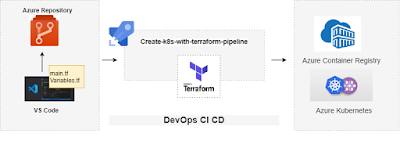In my previous blog https://www.leogether.com/2020/09/creating-kubernetes-cluster-with-azure.html
I created the Azure Container Registry and Kubernetes cluster using Terraform and Azure DevOps. I would encourage you to read my previous blog first before reading this.
In this blog, I will show you how to import a docker image into the Azure Container registry and deploy the application in the Kubernetes cluster using the Azure DevOps YAML pipeline. The complete architectural flow is as below:
















